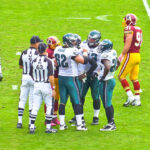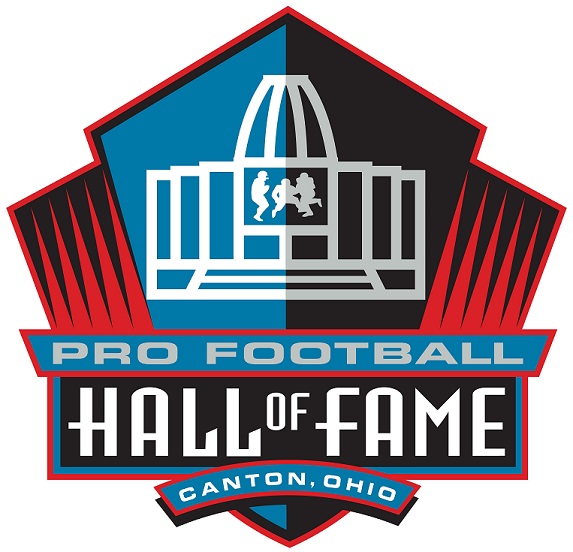As promised in my fantasy team foundation story earlier this week, it’s time to take a somewhat deeper dive into my 2013 draft strategy. Position by postion, I’ll tell you what I’m doing and why.
Quarterbacks
A few weeks ago I stumbled upon a piece at TheHuddle.com that provided incredibly in-depth research to crystallize and validate my thoughts on how to treat quarterbacks not only this season, but in all seasons. I believe you need a site membership (along with about 45 minutes) to read the piece, but I’ll sum it up for you: wait on quarterbacks. The basic philosophy behind this is that while there is a difference between the best quarterback and the No. 10 or 12 quarterback (low-end starter), the difference is not nearly as great as the difference between the high end and low end starters at RB, WR and TE, in order from greatest to smallest ranges. And to steal a stat from fantasy guru Ryan Boser, who knocked our Mock Draft out of the park on Tuesday (to be posted later this week), he noted via Twitter (@Ryan_Boser) that in 2003, the top three quarterbacks averaged 22.3 fantasy points per game, with six quarterbacks averaging over 20 points per game. In 2012, the elite quarterbacks upped their average to 26.1 points per game, but a whopping 15 averaged more than 20. Are those extra 4-5 points worth 6-8 rounds of draft position? Absolutely not.
Now this doesn’t necessarily mean wait until the very end of your draft to get a quarterback, though it could. What I’m ultimately doing is waiting on quarterbacks until the value is amazing—basically more than a round of difference between ADP and the position I’d be taking them—or grabbing quarterbacks just prior to teams starting to take backup QBs. The latter is a bit tricky as you can never truly know who will dive into those waters first, but as a general rule anyone with a top five or six quarterback is likely to wait on a backup because they are making up for the earlier pick they used on the position. So basically once the Andrew Lucks and Colin Kaepernicks are called, I’m looking at my draft position and who still needs quarterbacks. Then I’m pairing up high-upside guys; and there are plenty I like. In fact, there are 18 quarterbacks that if I had any two of them (obviously which two depend on how the draft went) I’d be totally comfortable with heading into the season. If the top-end guys do fall, I’m only taking one QB and worrying about the bye week later.
Running Backs
I’ve always been an advocate of flexibility, which in general has kept me away from going RB/RB in my fantasy draft history. I’m still likely to stay away from it, but I’d say this year is the best chance of any in recent memory for me to go that route. This is simply based on where my tiers fall.
There are 20 running backs that I have above-average to very-high confidence in. That’s not to say there aren’t guys outside of my top 20 that will have very good fantasy seasons, its just that the 21 and on range is murkier due to injuries, offensive lines, job shares, etc. I’m stating the obvious, but that’s the reason why some guys are ranked higher than others. In past years things have been a little more parsed, where if I went WR/WR or WR/TE or whatever in the first two rounds, I’d feel OK about using my next three picks on RBs to balance my roster. This year, not so much.
I want my No. 1 RB to fall somewhere in my top 14. Any of those guys I’m comfortable with as an anchor. The last six of those 20 I like are guys that come with questions be they injury history (DeMarco Murray, Darren McFadden, Maurice Jones-Drew), age (Frank Gore), or inexperience (Lamar Miller, Le’Veon Bell). This basically means I’m taking one running back with my first two picks regardless, and potentially two depending on how early the Calvin Johnsons and Jimmy Grahams get swiped. I will note that in mock drafts so far, my favorite teams have been the ones that go RB/WR/RB in the first three rounds, though I’ve had some nice RB/WR/WR/RB teams and RB/RB/WR/WR as well. Generally speaking, whether I’m RB-heavy or WR-heavy in the first four rounds, I’ll hit the other position much harder in the middle rounds, leaving my depth a little bit suspect at the position where I feel I have high-end talent that I will be leaving in my starting lineup every week regardless. That is generally going to mean WR for me this year, as I will more than likely wind up with two RBs in my first three rounds most of the time.
Wide Receivers
The top four receivers in my rankings are nearly interchangeable, though Calvin Johnson is the only one I’d select in the first round. The other three are all Round 2 talents as far as I’m concerned, and the next seven are all Round 3 talent. But when your league-mates start taking Drew Brees and Aaron Rodgers, that bumps some of the guys back into Round 4, which is why RB/RB/WR/WR, while normally considered antiquated thinking, works out fairly well depending on your draft slot this year. But if you’re comfortable with guys towards the back end of the top 20 running backs, RB/WR/RB/WR may be even more lucrative.
Even once you get through those first 11 I noted, there are some definite high-risk/high-reward types and some solid value plays. This is yet another reason to lean RB early, because then you’re drafting maybe one more WR than you normally would, and those middle rounds is where you’ll ultimately hit on maybe a Hakeem Nicks or Torrey Smith or DeSean Jackson. And if you don’t, WR is generally the most fruitful position on the waiver wire after quarterbacks—though TE may give it a run for its money this year.
Tight Ends
I wrote a piece about Rob Gronkowski’s fantasy value a few weeks ago that pertains to my overall theory on the tight end position this season. The basic premise is that you can risk taking Gronkowski as your No. 2 ranked tight end because of how many assets there are at the position. A decent-to-good case can be made for any of the following players to finish in the top 12 among tight ends in fantasy points this season: Jordan Cameron, Brandon Pettigrew, Brandon Myers, Fred Davis, Dustin Keller, Ed Dickson, Dwayne Allen, Coby Fleener. All are ranked outside my top 12.
Sure, each of them comes with their own risks, but pairing two of these guys together is hardly Powerball odds. What’s more, many of these guys will go undrafted, and there’s even more fantasy value available in guys like Rob Housler, Heath Miller, Tyler Eifert and Zach Sudfeld. So even if you miss, there’s a safety net just a click away.
As such, my positional approach is the following: Graham and Gronkowski can both be reasonably taken at or around their ADP, assuming you haven’t previously shorted yourself on running backs (mostly in the case of Gronk, who’s going 24 picks after Graham in ADP as of August 13 on myfantasyleague.com). This is because they offer so much positional upside versus the rest of the tight ends. In PPR leagues I’m extending this to Tony Gonzalez and Jason Witten. But from there, it’s a crapshoot. Guys like Kyle Rudolph, Owen Daniels, Greg Olsen and Antonio Gates offer a bit of consistency, but none really have exciting upside. So while in a vacuum they are better picks than the guys ranked after them, they simply don’t represent value considering where they are drafted versus guys on the list I mentioned, along with Jared Cook, Martellus Bennett and Jermichael Finley. Better to stock the cupboards at other positions and get those guys.
So if I miss on Graham and Gronk, I’m not touching a tight end for several more rounds. I’m more than happy going into the season with a duo like Bennett and Cameron, and happy to make an early waiver wire move if need be.
Kickers and Defense
Nine times out of 10, I’m taking a defense in the second to last round and kicker in the last round. This isn’t to say that these positions aren’t valuable. In fact, if your league is especially rewarding to D/STs, I can make a decent argument that when you’ve drained the pool of RBs/WRs with particularly high upside through seven or eight rounds, its OK to be the first to grab your D/ST. But statistically speaking, it’s not a gamble worth making. Every season, multiple top 10 kickers and top 10 defenses by season’s end are sitting on your league’s waiver wire. And much like quarterbacks, the difference between the high end and low-end starters at these positions isn’t enough of a value to keep you from stockpiling at the primary RB/WR spots.
So there you have it, my 2013 draft strategy in 1,500 words. Ultimately you have to be comfortable with the team you draft, but if you follow these position guidelines I believe that you’ll leave your draft even more antsy for the season to begin.









With quarterbacks, how much would your strategy change for leagues that offer six points for touchdowns and/or for leagues that penalize -2 or -3 for interceptions?
Not much, actually. The quarterbacks might be ranked differently: guys whose fantasy value comes more from touchdowns than yardage will move up my ranks with 6 per TD, and guys who throw a lot of interceptions will move down. But the philosophy is still the same.
Where the philosophy changes is in leagues that start two QBs or have QBs as a flex option–though the latter will depend a lot on specific scoring system and where QBs fall relative to other positions.